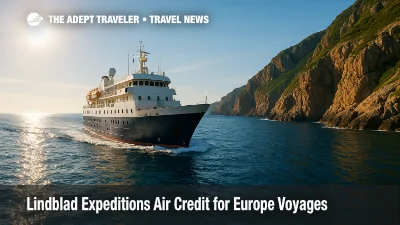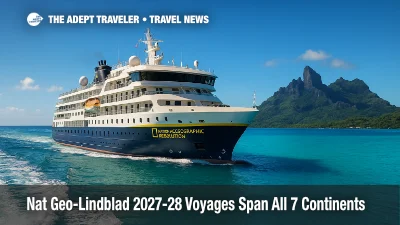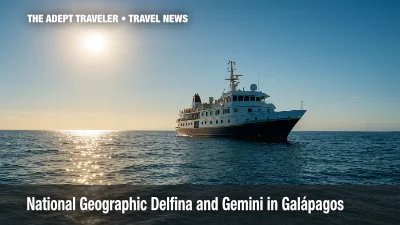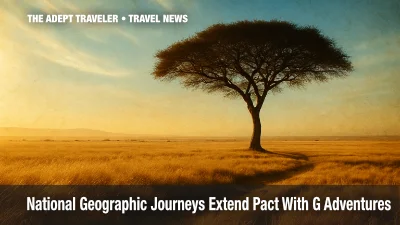National Geographic
In an ever-increasingly digital world, it is refreshing to know that traditional forms of media like National Geographic remain a bastion of insightful, meticulously researched, stunningly visual and primarily, essential information for discerning travelers worldwide. Founded in 1888, National Geographic has a prolific historical tradition of bringing the world into the homes of millions of readers through its printed magazines. With the advent of the internet, its followers have exploded exponentially, and thus, it has established itself as a dependable and authoritative resource for travel information.
Travel Destinations, Imagery and Representation
National Geographic allows you to virtually traverse the globe, featuring comprehensive coverage on over a hundred destinations. Their extensive repository offers an in-depth look into the heart and soul of every location covered, focusing on everything from tourist attractions, nature reserves, museums, archaeology, culture, and indigenous traditions. This comprehensive coverage serves the dual purpose of enlightening and enchanting readers, giving them a deep understanding and appreciation for places most of them may never physically visit.
Beyond words, National Geographic leverages on powerful, visceral and stunning photography to tell compelling stories of lands both near and far. These captivating images are a testament to not just the inherent beauty of these landscapes, but they allow for a more intimate connection between the reader and the locales. High-quality images of towering snow-capped mountains, lush tropical rainforests, shimmering cityscapes, tranquil beaches, and vibrant local life, each serve as a persuasive argument to readers that these places are worth exploring.
National Geographic Travel: Beyond the Magazine
As part of their effort to immerse travelers in various cultural experiences, National Geographic offers much more than just magazine articles. They have expanded their reach by branching out into television with the National Geographic Channel and documentaries like the National Geographic Explorer. These visual mediums bring fascinating stories about travel, culture, history, and science to a different segment of audiences - those with an audio-visual preference for digesting information.
In partnership with Lindblad Expeditions, National Geographic also organizes fascinating expeditions and trips. This alliance allows travel-lovers to embark on inspiring journeys, guided by experts in their respective fields such as photographers, archaeologists, naturalists, etc. From exploring the penguin colonies of Antarctica to traversing the wilderness of Alaska, these uniquely curated travel journeys allow individuals to experience the tactile feel and authenticity of these locations.
The Educational Aspect
Another distinctive feature of National Geographic's representation of travel is its unparalleled approach to education. The organization aims to motivate its readers to not just visit a locale but to understand their ethical and socio-cultural responsibility. They educate travelers about environmental concerns, conservation issues, the complexity of cultural layers and indigenous rights. They continually highlight the significance of sustainable and responsible tourism, as is evident through features on ecotourism and conservation-oriented travel destinations. In doing so, they promote mutual understanding, respect, and harmony between cultures, fostering a sense of global community among its readers.
Travel Inspiration and Planning
For those needing travel inspiration, National Geographic's regularly updated travel section features numerous articles, photo galleries and videos presenting an array of travel themes such as adventure, family, history, and nature. These resources are essential tools that can spark ideas and help mold an individual’s perfect adventure. Furthermore, their comprehensive city guides, tips, and advice on different destinations can offer valuable insights and practical help during trip planning stages.
National Geographic’s printed travel guides are another part of their diverse portfolio, featuring some of the world’s most popular tourist attractions. These guides contain valuable information about sites of interest, local customs and practices, essential travel tips, suggested itineraries, and accommodation options. They are designed to make one’s travelling experience memorable, smooth, and hassle-free.
Conclusion
National Geographic serves more than just being your typical travel guide. It represents an elaborate intermingling of components - education, ethics, environment, and entertainment, which help mold a well-rounded, enlightened and respectful global traveler. It maintains a stellar reputation of providing high-quality, reliable, and comprehensive travel information merged with stunning visuals that inspire readers' imagination and passion for exploration. Their travel resources don't just supply the tools for a fantastic trip, but they help travelers make more informed, responsible decisions about their explorations. And in turn, contributing towards the greater good of the globe.
Lindblad Anniversary Offer Cuts Deposits, Ends Feb 9

Danube Christmas Markets River Cruises Add Evolve 2027

Lindblad Expeditions air credit for Europe voyages

Nat Geo-Lindblad 2027-28 Voyages Span All 7 Continents

National Geographic Rebrands Youth Program as Explorers-in-Training

National Geographic Delfina and Gemini Named in Galápagos Gathering

National Geographic Journeys Extend 10-Year Pact With G Adventures

